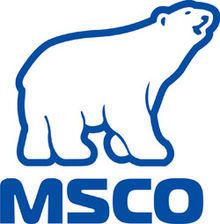Website www.msco.ru Founded 1939 | Services Shipping | |
 | ||
Key people Kulikov Nikolay Vladimirovich (chairman) | ||
Troms tromso city norway with cruise ship in harbour
Murmansk Shipping Company (Russian: Мурманское морское пароходство), often abbreviated as MSCO, is a Russian shipping company based in Murmansk (hence the name). One of the primary shipping companies operating in Arctic Russia and northern Europe, as of 2014 the company has 303 vessels, with a total deadweight of about 1.2 million tons. The company runs a notable museum in Murmansk.
Contents
- Troms tromso city norway with cruise ship in harbour
- History
- Facilities
- Museum
- Past and present vessels
- References
History
The company was established in 1939 as the Murmansk State Dry-Cargo and Passenger Shipping Company, and was renamed to its present name in 1967. It specialised in arctic transportation, and by 1940 it had 37 vessels with a total deadweight of 112,200 tons. During World War II its carriers served as allied escorts. This is the only company in the world which uses nuclear-powered icebreakers and the only Russian shipping company which is active in the Arctic during all the seasons. It performs passenger as well as cargo navigation. In 1973, the Northern Fleet and the Murmansk Shipping Company commenced transporting spent nuclear fuel by barges to Murmansk, and then delivering it to Mayak by train. In 1977, one of its ships, the nuclear-powered icebreaker Arktika, reached the North Pole for the first time.
The company was reorganized into the Joint Stock Company in 1993. At this time the company faced significant criticism from environmentalists which culminated from the Yablokov Report, drawn up by presidential adviser Aleksey Yablokov, which revealed that the Northern Fleet and the Murmansk Shipping Company had dumped some 2.5 million curies of liquid and solid radioactive waste in the Arctic Ocean between 1959 and 1991. In 1996 the Murmansk Shipping Company reported 3,100 fuel assemblies were stored on the service ship Lotta.
Facilities
The main operating facility of the company is at Atomflot, to the north of the city on the Murmansk Fjord. The base contains liquid and solid waste processing systems, warehouses for shipping supplies and workshops etc. The ships are maintained at the dry docks in Murmansk, and the Zvezdochka shipyard in Severodvinsk also makes repairs to the reactors of the nuclear-powered icebreakers.
Museum
The Murmansk Shipping Company Museum on Volodarskogo Street in Murmansk, established in 1977, has an extensive collection of artifacts related to its history and Russian naval history. Among its displays are photographs of polar captains, ship bells, micro model replicas, marine equipment, with one section dedicated entirely to icebreakers and their history.
Past and present vessels
As of 2014 the company has 303 vessels, with a total deadweight of about 1.2 million tons. A selected number of ships are shown below:
